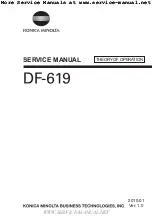
Chapter 15: Preferences
5495975-1EN Rev.9
15-55
© 2013-2017 General Electric Company. All rights reserved.
Figure 15-42
Image processing preferences editor screen opened from the Viewer
Tissue Equalization Overview
Tissue Equalization (TE) is an advanced image-processing algorithm that improves contrast and visibility
in over-penetrated and under-penetrated regions of an image without compromising the contrast in
other regions of interest. In combination with the wide dynamic range of the digital receptor, TE allows
display of more information collected in a single shot, reducing re-takes and increasing throughput.
TE Usage
Over-penetrated Regions
An over-penetrated region in an image results from x-rays passing through a relatively less dense region
of the anatomy such as soft tissue (skin edge).
Over-penetrated regions of an image appear darker with reduced contrast. Using TE, the contrast in such
regions can be enhanced to improve visualization of soft-tissue. TE can also be used to enhance vessel
contrast in lungs. In
, the skin edge around the neck is more clearly defined with TE.
Under-penetrated Regions
An under-penetrated region in an image results from insufficient x-rays passing through relatively dense
anatomical regions. For example, anatomy containing dense tissue (abdomen) and bone (ankles/wrists/
shoulders) result in under-penetrated images.
Under-penetrated regions of an image such as the cervical and thoracic spine appear white- white spine
obscured by the overlaying anatomy like the white shoulders. Using TE, the overlaying anatomy can be
made grayer making the underlying spine more visible (
). A hand image can similarly be dis-
played with improved bone contrast. This makes TE an invaluable tool in visualizing the entire bone field.
















































